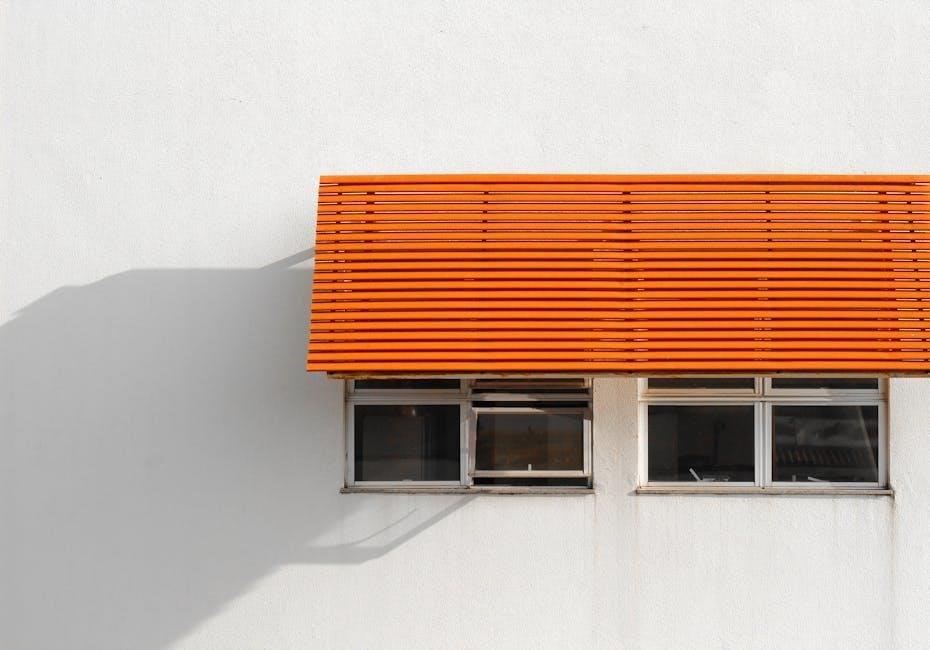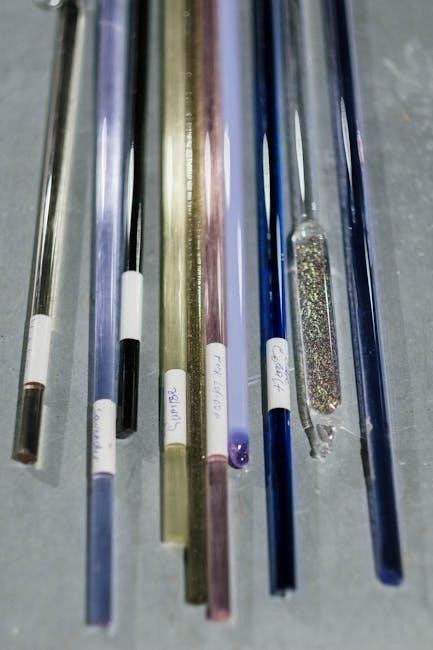Stained glass slope-graphing linear equations introduce students to graphing lines‚ using
- ordered lists
to organize equations and create designs‚ combining math and art to produce stunning stained glass pieces with precise calculations.
Understanding the Concept of Slope-Graphing
To understand the concept of slope-graphing‚ students need to learn about linear equations and their graphs‚ using tables and
to organize data and identify patterns‚ and applying this knowledge to create stained glass designs with precise slope and intercept calculations.
The concept of slope-graphing involves determining the slope and y-intercept of a line‚ and using this information to graph the line on a coordinate plane‚ with x and y axes‚ and
- unordered lists
of equations to choose from.
By understanding the concept of slope-graphing‚ students can create complex stained glass designs‚ using different colors and shapes‚ and applying mathematical concepts to produce unique and precise pieces‚ with accurate calculations and attention to detail‚ and following a set of instructions and guidelines to achieve the desired result‚ and using various tools and materials to create their designs.
This understanding is essential for creating stunning stained glass pieces‚ and applying mathematical concepts to real-world problems‚ and developing problem-solving skills and critical thinking‚ and using technology and software to enhance their designs and calculations‚ and creating a beautiful and intricate stained glass window‚ with precise slope and intercept calculations‚ and a deep understanding of the concept of slope-graphing‚ and its application to stained glass design‚ and the use of mathematical concepts to produce unique and precise pieces.

Linear Equations and Graphing
Linear equations are used to create stained glass designs‚ with links to graphing concepts‚ and applying mathematical formulas to produce unique pieces‚ using x and y coordinates‚ and tables to organize data.
Writing Equations in Slope-Intercept Form
Writing equations in slope-intercept form is a crucial step in stained glass slope-graphing linear equations‚ as it allows students to easily identify the slope and y-intercept of a line‚ using the formula y = mx + b‚ where m is the slope and b is the y-intercept. This form is particularly useful for graphing lines‚ as it provides a clear and concise way to represent the equation of a line. By using slope-intercept form‚ students can quickly determine the slope and y-intercept of a line‚ and use this information to graph the line on a coordinate plane. The use of tables and
- ordered lists
can also help students to organize their data and write equations in slope-intercept form. Additionally‚ this form is essential for creating stained glass designs‚ as it enables students to accurately graph lines and create intricate patterns. With practice and patience‚ students can master the skill of writing equations in slope-intercept form.

Creating a Stained Glass Design
Students create stained glass designs using images and
- unordered lists
to organize colors and patterns‚ combining math and art to produce unique pieces with precise calculations and creativity always.
Coloring and Outlining the Design
Coloring and outlining the design is a crucial step in creating a stained glass piece‚ requiring attention to detail and precision. Students use a variety of colors and techniques to bring their designs to life‚ including
- ordered lists
to organize their color palette and
- unordered lists
to brainstorm different patterns and shades. The use of images and
can also help students visualize their design and make adjustments as needed. By combining math and art‚ students can create unique and intricate designs that showcase their understanding of linear equations and graphing. The coloring and outlining process allows students to express their creativity and add a personal touch to their stained glass piece‚ making each one a truly original work of art. This process helps students develop their fine motor skills and hand-eye coordination‚ as well as their problem-solving abilities.
Graphing Linear Equations
Using links and images to visualize equations‚ students graph lines with precision and accuracy always.
Determining Slope and Intercept
Students learn to determine the slope and intercept of linear equations‚ which is crucial for graphing lines and creating stained glass designs. The slope can be positive‚ negative‚ zero‚ or undefined‚ and the intercept can be a single point or a range of values. By analyzing the equation‚ students can identify the slope and intercept‚ and use this information to graph the line. This process involves using mathematical formulas and techniques‚ such as the slope-intercept form‚ to derive the necessary information. The use of tables‚ charts‚ and graphs can also help students visualize the relationship between the slope and intercept‚ and make it easier to determine these values. With practice and experience‚ students can become proficient in determining the slope and intercept of linear equations‚ and apply this knowledge to create complex stained glass designs using various techniques and tools. This skill is essential for creating accurate and beautiful stained glass pieces.

Project Overview
Students design a stained glass window using linear equations‚ applying math skills to create a unique artistic piece with precise calculations and attention to detail always.
Designing a Stained Glass Window using Linear Equations
Designing a stained glass window using linear equations involves several steps‚ including choosing the equations‚ determining the slope and intercept‚ and graphing the lines. Students can use a variety of tools‚ such as graph paper and colored pencils‚ to create their design. The use of linear equations allows students to create a unique and precise design‚ with clean lines and geometric shapes. By applying mathematical concepts to art‚ students can develop their problem-solving skills and attention to detail. The stained glass window design can be customized to fit individual tastes and styles‚ making it a fun and creative project. The process of designing a stained glass window using linear equations requires patience‚ dedication‚ and a willingness to learn and experiment with new ideas and techniques‚ making it a rewarding experience for students. The final product is a beautiful and intricate stained glass window that showcases mathematical concepts in a creative way.

Answer Key and Solution
The solution involves checking calculations and verifying graphed lines using
- unordered lists
to ensure accuracy and completeness of the stained glass design project with precise linear equations.
Completing the Stained Glass Slope Graphing Task
To complete the task‚ students identify the slope and y-intercept from the linear equations‚ then graph them on a coordinate plane using
- ordered lists
to organize their work. They extend and darken the lines to create the stained glass design‚ ensuring accuracy and attention to detail. The use of
- unordered lists
can also help students keep track of the different equations and their corresponding graphs. By following these steps‚ students can create a beautiful and mathematically accurate stained glass design‚ demonstrating their understanding of linear equations and graphing concepts. The completion of this task requires patience‚ persistence‚ and a strong foundation in mathematical principles‚ making it a rewarding and challenging project for students to undertake and complete with precision and accuracy always.
